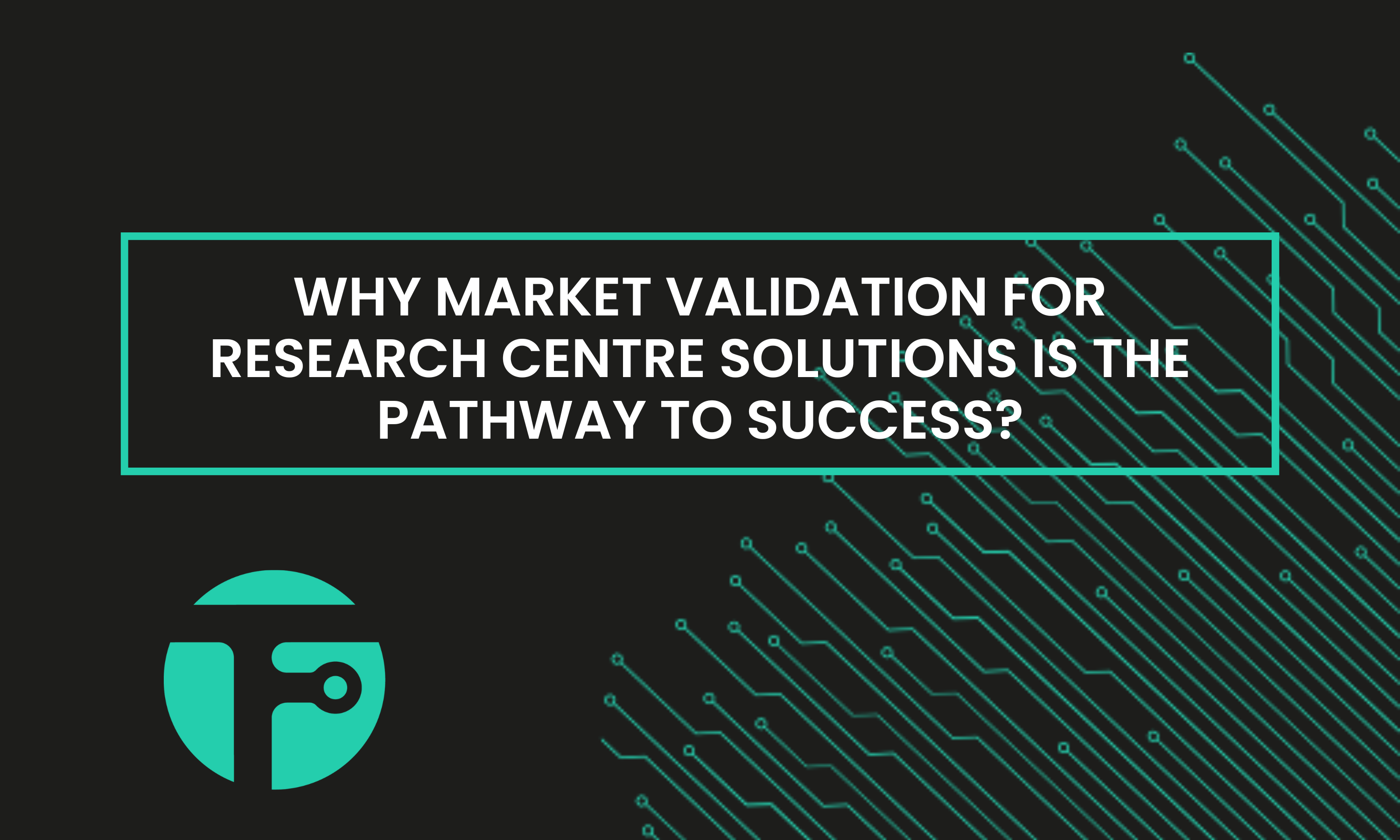The Research centres bridge the gap between academia and industry and fosters the development of cutting-edge technologies and translating research into practical, market-ready solutions. But having groundbreaking technology isn’t enough—without market validation for research centre solutions, even the most promising innovations may fail to achieve commercial success.
What is market validation?
Market validation is the process of determining if there is a viable market for a product, service, or solution. It involves engaging with potential customers to understand their needs, preferences, and willingness to pay for a proposed solution. And for research centres this means assessing whether their technological innovations align with real-world market demands and identifying the industries or segments most likely to benefit from their research.
The validation process helps research centres reduce the risks associated with commercialization by ensuring that the developed solution solves a real problem and offers value to potential users. And through this process, research centres can determine whether to proceed with full-scale development, pivot their approach, or shelve the project altogether.
Why market validation for research centre solutions matters?
Minimizing Investment Risks: Research centres may invest significant resources in developing solutions that fail to resonate with customers or meet industry needs without thorough market validation. Validation provides early feedback, allowing organizations to refine or adjust their strategies before committing more resources.
Aligning Research with Market Demand: Academic research often follows a curiosity-driven approach so market-driven innovations must solve specific and actionable problems. By focusing on market validation for research centres’ solutions, they can better align their solutions with the actual needs of industries and businesses, improving the chances of adoption.
Accelerating Time-to-Market: Market validation can streamline the product development process by providing clear guidance on features, functionality, and user preferences. And this reduces trial and error, resulting in faster iterations and a shorter time to market.
Strengthening Funding and Partnership Opportunities: Research centres often rely on external funding and partnerships for development and commercialization. Investors and partners are more likely to support projects that have undergone market validation, as it signals that the solution has a viable market and a strong potential for return on investment.
Steps for effective market validation in research centres
- Customer discovery: Start by identifying and engaging with potential customers. Through interviews, surveys, and focus groups, research centres can gather insights about customer pain points and their interest in a proposed solution. The goal is to validate whether the technology addresses a real need.
- Prototype testing: Building prototypes or minimum viable products (MVPs) allows research centres to test their solution in real-world scenarios. Feedback from users interacting with the prototype provides crucial data on product features, usability, and market fit.
- Competitive analysis: Understanding the competitive landscape is essential for market validation. Research centre should evaluate existing solutions in the market and identify their unique selling proposition (USP) that differentiates their technology from competitors.
- Pilot programs and partnerships: Collaborating with industry partners through pilot programs can serve as a powerful market validation tool. These partnerships offer insights into the scalability and integration of the solution within industry ecosystems and often lead to further funding or commercialization support.
- Quantifying market potential: Conducting market research helps estimate the total addressable market (TAM) and serviceable available market (SAM) for the technology. This is critical for assessing the commercial viability and understanding the revenue potential of the solution.
Case studies of market-validated research centre solutions
Several research centres have successfully navigated the path to market validation, demonstrating the tangible benefits of this process. For example:
Smart Factory KL, through the DIMOFAC project, offered consultancy services to Printcirc, a startup aiming to integrate advanced manufacturing technologies. The focus was on exploring how Smart Factory KL’s Open Pilot Line and Asset Administration Shell technologies could enhance Printcirc’s production processes and align with their business model to drive greater efficiency. Although full implementation is still underway, the initial collaboration was highly productive, demonstrating strong potential for future partnerships and continued technological integration. Learn more here.
AIMEN’s laser texturing service, developed under the DIMOFAC project, enhances automotive components by offering advanced customization and branding opportunities through precise laser technology. The initial implementation was successful, with the beneficiary expressing high satisfaction, indicating strong potential for further collaboration and integration into production processes. AIMEN aims to set a new standard for quality and innovation in component customization within the automotive industry. Learn more here.
Conclusion
Market validation is a critical step for research centres in ensuring the commercial success of their technological innovations. By engaging with customers, conducting rigorous testing and aligning their research with industry needs, research centres can reduce commercialization risks and increase the likelihood of adoption. As the global market continues to evolve, organizations that prioritize market validation will be better positioned to turn cutting-edge research into impactful, market-ready solutions.
At Techfinders, we specialize in taking technology to the market, especially from institutions and universities. Take a look at our services and contact us.

